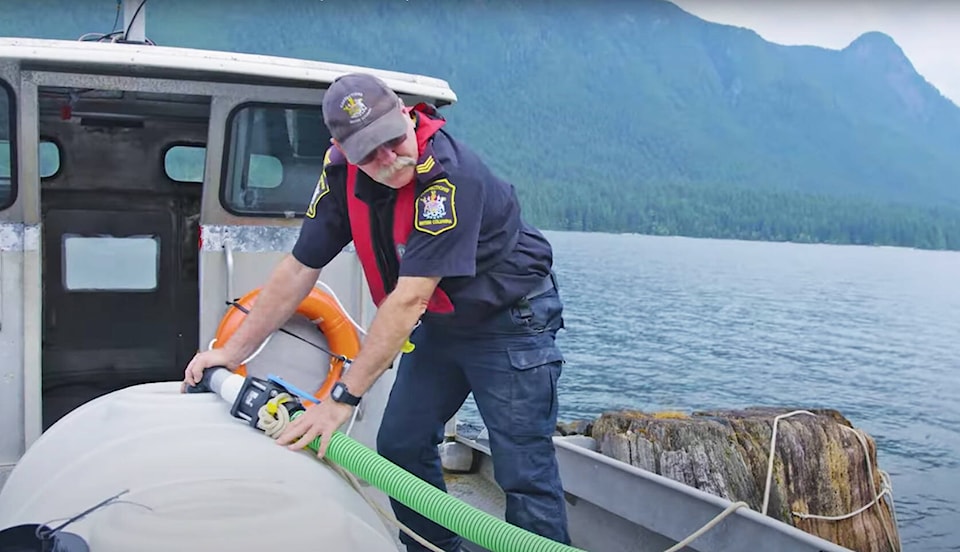A decades-long effort to put nutrients in Alouette Lake for sockeye salmon has been recognized with a nomination for a Premier’s Excellence Award.
The Alouette Reservoir Nutrient Restoration Program is a finalist in the regional impact category. The program is delivered by multiple partners, including First Nations, the Fraser Valley Correctional Centre, BC Hydro, municipal and federal governments, academia, industry, as well as the Alouette River Management Society (ARMS). Through their collaborative efforts, a wild sockeye salmon population has returned to the Alouette reservoir.
ARMS executive director Greta Borick-Cunningham explained Hydro pays for the program, which sees staff from Fraser Regional Correctional Centre drive boats with tanks of “fertilizer” onto the lake, and add it to the surface water. It stimulates the growth of small marine animals and phytoplankton.
The result is that more sockeye smolts leave the lake in spring. They will return in four to five years, back up the Alouette River, as adults ready to spawn.
Their path is blocked by the Alouette Dam, so the sockeye are trapped at the ALLCO Park fish fence. ARMS measures them, and samples their DNA and scales. Then Corrections staff load them into a tank, onto a truck, drive them around the dam, and release them back into the Alouette Lake.
READ ALSO: Spawning salmon returns continue strong in Maple Ridge rivers
It’s a big effort that has been happening since 1999, and there is about 20 weeks of “fertilizing” each year.
It has brought the salmon population up from 18,000 fish in the system, to more than 200,000. There are adult sockey returning every year, for the first time in 80 years. But the number returning is small – just three sockeye returned this year.
That was a disheartening anomaly, said Borick-Cunningham, caused by low water levels in 2019, that prevented sockeye smolts from being able to get past the dam.
But it’s generally been better. In their best year, 2010, they trapped and trucked 115 sockeye around the dam and into the lake. The next highest total was 85 in 2020. A female will lay between 2,000 and 5,000 eggs.
If they’re not driven around the obstacle, said Borick-Cunningham, “they’ll kill themselves on that dam.” They are programmed to spawn in the lake, not the river. When they arrive at the fish fence, they are about three months away from spawning.
She explained the program replaces nutrients that would be left if thousands of salmon spawned and died in the lake, with their bodies returning to nature.
It’s a linchpin program, she said.
“It’s important that program can continue, until we get unimpeded fish access,” said Borick-Cunningham.
Advocating for a fish ladder for spawning salmon has been a longtime goal of ARMS.
